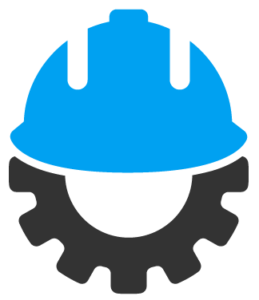Over two million workers die globally due to work-related injuries and diseases according to the International Labour Organization.[i] In the U.S. alone in 2016 there were 2.6 million  non-fatal workplace injuries and illnesses.[ii] The cost of workplace illness, injury and death is about $1.25 trillion per year or 4% of annual global GDP. Though many injuries and deaths are transport-related, slips and falls, suspended weights, chemical exposure and other hazards take too many lives. For those of us who have had safety training or are safety practitioners, we know that all accidents are 100% avoidable, and that such figures are not faceless, but are personal tragedies of lost loved ones and lost human potential.
non-fatal workplace injuries and illnesses.[ii] The cost of workplace illness, injury and death is about $1.25 trillion per year or 4% of annual global GDP. Though many injuries and deaths are transport-related, slips and falls, suspended weights, chemical exposure and other hazards take too many lives. For those of us who have had safety training or are safety practitioners, we know that all accidents are 100% avoidable, and that such figures are not faceless, but are personal tragedies of lost loved ones and lost human potential.
Various studies have identified key groups with increased risk of occupational injury, such as temporary workers, younger workers and increasingly workers 55 and older. The characterization that such groups are in themselves more “risky” is too cut-and-dry and too jejune, and can be used as a fatal barrier to promoting better safety behaviors and instituting quality safety procedures and technologies.
Pinpointing such employee groupings such as young, temporary and experienced workers, though, can help create segments for targeted safety tools and initiatives. This is particularly important because these groups tend to actually be more exposed to hazards, feel less aware of procedures and policies and feel less empowered regarding their safety in the workplace, according to a 2015 study published in the American Journal of Industrial Medicine.[iii]
I believe—especially in an industrial setting—technology such voice assistants may be a critical and much needed addition that will increase safety by:
- Enhancing hazard identification;
- Ensure real-time, in situ awareness of policies and procedures; and,
- Provide an interactive safety empowerment tool for workers.
 Digital voice assistants are basically user interfaces employing the human voice and language, a cyber-butler that can carry out instructions by speaking. Using natural language processing, a digital voice assistant can execute anything from a search for the Eiffel Tower’s height to—with proper integration—a shutdown of household lighting or a heating system. As they are cloud-based applications, digital voice assistants can be accessed through small standalone speakers, laptops, phones, appliances, desktops and even wearables like watches or hearing-protection headphones.
Digital voice assistants are basically user interfaces employing the human voice and language, a cyber-butler that can carry out instructions by speaking. Using natural language processing, a digital voice assistant can execute anything from a search for the Eiffel Tower’s height to—with proper integration—a shutdown of household lighting or a heating system. As they are cloud-based applications, digital voice assistants can be accessed through small standalone speakers, laptops, phones, appliances, desktops and even wearables like watches or hearing-protection headphones.
Especially after the recent holiday season digital voice assistants have achieved ubiquity in the consumer space – Google claimed this week that its voice Assistant is available now through 400 million devices[iv] Other voice-driven technologies include Amazon’s Alexa, Apple’s Siri and Microsoft’s Cortana.
Google and Amazon’s Alexa have taken the overall lead in market share, but in the enterprise adoption has some ways to go; as an aside, corporate and industrial applications certainly are wide open competitively for runner-ups Apple and Microsoft, and could be a greater prize than handling voice queries for StampyCat YouTube videos.
Integration with the Internet of Things (IoT) is one killer app for voice, allowing interaction with complex instruments and machinery all through normal speech. Another killer app is simply being able to perform conversational queries and get instant responses based on information embedded in corporate systems and the cloud. These apps and others, including automation, remote monitoring, predictive analytics and preventative maintenance comprise the vision of Industry 4.0, also known as the Fourth Industrial Revolution.
Let’s Talk About Hazards
So how can digital voice assistants enhance safety? One way is helping workers, especially in the industrial space, identify hazards in the environment and those created by their own  behavior. This interactive education could start even before an employee sets foot on a shop floor. An initial safety briefing could be enhanced by interacting with a digital voice assistant, which could, for example, quiz workers on the content of a safety video and based on the responses automatically authorize entry to the plant or run a specific part of a safety video again to ensure understanding.
behavior. This interactive education could start even before an employee sets foot on a shop floor. An initial safety briefing could be enhanced by interacting with a digital voice assistant, which could, for example, quiz workers on the content of a safety video and based on the responses automatically authorize entry to the plant or run a specific part of a safety video again to ensure understanding.
Speaker-based, wearable-based or even machinery-based assistants can, based on a worker’s location, highlight key operational and environmental statuses, such as hot surfaces, operating instructions/parameters and the presence of hazardous chemicals. Speaking of chemicals, workers who use them could have instant access to Safety Data Sheet (SDS) information simply by asking.
Especially for temporary workers who may be unfamiliar with the layout of their new workspaces, having assistants to supplement any in-person training would be a net safety positive. An assistant can gently give a time reminder to an older worker, or any worker for that matter, who is repairing equipment that requires repetitive motion for an extended period. Melding analysis of biometrics such as heart rate from a wearable device may be possible and can provide deeper interactions with an assistant, but certain privacy concerns may have to be addressed before implementing such an initiative.
By interacting with a smart assistant, verbally and hands-free, workers would be able to get a richer sense of their environment, get up to speed quicker and avoid stress and strain both physical and mental.
Active, On-The-Spot Compliance
Assistants can be placed in areas such as confined spaces, to not only provide a means of communications should something go wrong, but also a way to provide safety procedure guidance, through recitation of policies or even an interactive quiz that can remind workers of best practices.
A worker who may forget and disregard the use of personal protective equipment (PPE) may not be able to operate a piece of machinery without first voice-certifying that equipment is being worn. Through coupling voice feedback as well as sensor data, policies such as lock-out-tag-out-try-out (LOTOTO) could be strictly enforced, allowing start-up or stand-down of machinery only through an interactive voice checklist session with an assistant. Augmented-reality safety goggles could give additional feedback.
Supervisors, managers and workers themselves are the enforcers of safety policies and procedures, but the addition of digital voice assistants would be an added check.
Giving Employees A Voice
Younger workers may feel intimidated providing safety feedback or suggestions to superiors. In this way a smart assistant can act as a digital confidante, providing a way for younger workers to communicate safety concerns or kudos. Temp workers new to their roles and just integrating into a culture may rely heavily on a digital assistant to get up to speed. Older workers may want to augment their wisdom with learning about new processes or to interactively review procedures they have not performed in some time.
A digital voice assistant can ease any personal discomfort around safety.
Just A Start
There are so many other areas within safety and besides safety, including preventative maintenance, supplier management, collaborative manufacturing and others, where digital voice assistants can and will play a major role in industry. Firms that integrate voice in their processes will provide a unique human interface and experience to their workers, resulting in more efficiency, more training and greater competitive advantage.
Most importantly, more lives will be saved and made better through increased safety awareness, compliance and empowerment. I will discuss this topic further in my podcast, including strategic consideration, soon at my site, Moonshot Exec.
Stay safe!
Endnotes
[i] International Labour Organization. 2014. Safety and Health at Work: A Vision for Sustainable Prevention: XX World Congress on Safety and Health at Work 2014: Global Forum for Prevention, 24–27 August, 2014. Frankfurt, Germany. International Labour Organization, Geneva.
[ii] https://www.bls.gov/news.release/osh.nr0.htm
[iii] Lay, A. M., Saunders, R., Lifshen, M., Breslin, C., LaMontagne, A., Tompa, E. and Smith, P. (2016), Individual, occupational, and workplace correlates of occupational health and safety vulnerability in a sample of Canadian workers. Am. J. Ind. Med., 59: 119–128. doi:10.1002/ajim.22535
[iv] https://www.blog.google/products/assistant/new-devices-more-google-assistant-ces-2018/
